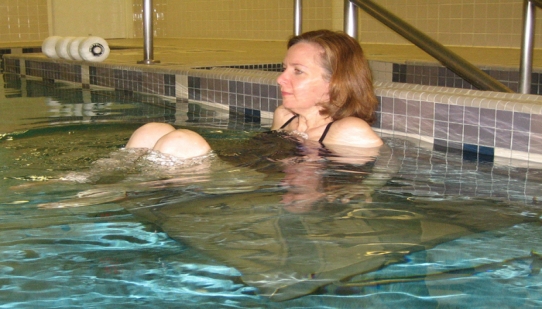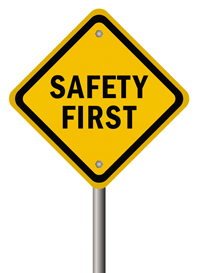
What About Exercise with LGMD?

Neurologist Katherine Mathews discusses exercise in limb-girdle muscular dystrophy
 Katherine Mathews is a neurologist at the University of Iowa Hospitals & Clinics in Iowa City, where she co-directs the MDA clinic. She recently discussed exercise in limb-girdle muscular dystrophy (LGMD) with MDA medical and science editor Margaret Wahl.
Katherine Mathews is a neurologist at the University of Iowa Hospitals & Clinics in Iowa City, where she co-directs the MDA clinic. She recently discussed exercise in limb-girdle muscular dystrophy (LGMD) with MDA medical and science editor Margaret Wahl.
Q: Do the different types of limb-girdle muscular dystrophy have implications for what you tell people about their activities?
A: Yes. I tell people that, if they have [an LGMD form] that’s related to muscle-fiber membrane maintenance or repair, we think from animal studies that you can speed the injury to muscle by doing certain kinds of exercise. [Editor’s note: LGMD types 1A, 1C, 2A, 2B, 2C, 2D, 2E, 2F, 2L and 2Q are known to involve membrane fragility or insufficient membrane repair and maintenance.]
So, for example, we tell them with these disorders to avoid eccentric exercise [exercise during which a muscle is used to slow its own relaxation and provide a “braking” action, such as when lowering a weight or running downhill]. I tell them not to go on a weight training program. And I tell them that if their muscles hurt after an exercise, or if they’re excessively fatigued, don’t do it.
You have to live your life, so I don’t restrict people from doing the things that are required for living their lives. But I do tell kids, if you have a gym teacher who’s telling you, “You can go farther, you can run harder” — no, you shouldn’t. You should set your own limits. When you start to fatigue, you should stop. If something causes pain, you should stop.
And the same for older people with a physical therapist. A therapist may see you’ve got hip-girdle weakness and think, let’s put you on an exercise program to increase your strength. If your CK [creatine kinase, an enzyme that leaks out of damaged muscle fibers] is 5,000 [elevated above normal], I’m going to tell them, “No, let’s not do that. Let’s work on stretching and mobility and activities of daily living; let’s not do strengthening exercises.”
On the other hand, if they’re in the other categories [of LGMD] I don’t discourage them from exercise. We have no evidence that there is harm from exercise in these other forms.
Q: Are there types of exercise that you think might be helpful even if there is a membrane defect?
A: Swimming and being active in the water is our go-to activity.
Caution: Exercise Can Be Hazardous to Your Health
 Exercise can be a good thing — but only if undertaken safely. Here are some warning signs that say STOP.
Exercise can be a good thing — but only if undertaken safely. Here are some warning signs that say STOP.
When muscle fibers are undergoing damage, they usually — but not always — announce it pretty quickly with cramping and pain.
But sometimes muscle destruction doesn’t make itself known until enough damaged muscle fibers have released a pigmented protein called myoglobin into the blood and eventually into the kidneys and urine. This type of damage is particularly likely to occur in LGMD type 2I.
Signs muscle damage or impending muscle damage are:
- cramping in muscles (probably related to insufficient energy supply for muscles);
- pain in muscles;
- weakness of exercised muscles; and
- dark urine that looks like cola (indicating the presence of myoglobin protein), hours after exercising (seek medical care immediately if this occurs).
Many muscle diseases affect the heart, impairing its ability to pump blood fast enough to keep up with the demands of strenuous exercise, or causing an irregular heartbeat or one that’s too fast or too slow. Strenuous exercise can exacerbate these abnormalities.
LGMD types 1A, 1B, 1C, 1E, 2C, 2E, 2F, 2G, 2I, and 2M are known to involve the heart. Signs of cardiac stress are:
- shortness of breath
- chest pain
- very elevated heart rate (150 to160 beats per minute) with even moderate exercise
- weakness
- nausea
- sweating
- a gurgling sound in the chest with breathing
Seek medical care immediately if these symptoms occur. It can’t be stated enough: Always consult a physician before undertaking a new exercise program.
For more, see Exercising with a Muscle Disease.
MDA Resource Center: We’re Here For You
Our trained specialists are here to provide one-on-one support for every part of your journey. Send a message below or call us at 1-833-ASK-MDA1 (1-833-275-6321). If you live outside the U.S., we may be able to connect you to muscular dystrophy groups in your area, but MDA programs are only available in the U.S.
Request Information